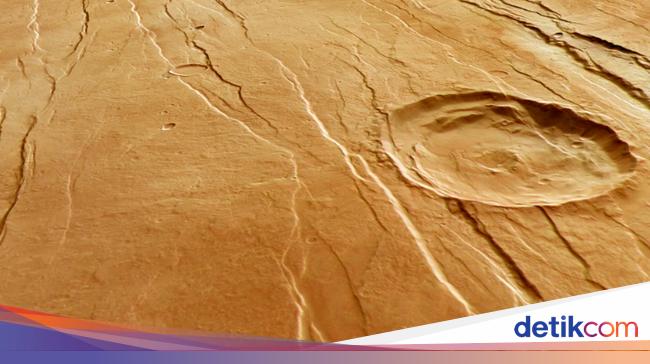Jakarta –
Mars save so many interesting mysteries to solve. Thanks to the development of rover robots, we can see a lot of things on this Red Planet.
In the latest release from the European space agency’s Mars Express orbiter, ESA, the unique geological features of Mars are shown in stunning detail.
As quoted from Science Alert, recent images of Mars show features that look like giant claw marks on the planet’s surface. The groove is part of a giant fault system on Mars known as the Tantalus Fossae.
Apart from the details in the images, what really surprises me is the scale that is visible. This trench is up to 350 meters deep and 10 kilometers wide, and stretches up to 1,000 kilometers.
The images are true colors, meaning they represent what humans would see if they saw the area with their own eyes.
Technically, this is an image generated from a digital terrain model of Mars and using the High Resolution Stereo Camera color channel on Mars Express. But this image presents a very clear view of a large area.
The image above shows a tilted perspective, while the image below is a top-down view of the Tantalus Fossae.
|
Photo: ESA– |
According to an ESA press release, the ground resolution of these images is approximately 18 meters/pixel and the images are centered at approximately 43°N/257°E. North is to the right.
A fossa is a basin or depression, and the Tantalus Fossae runs along the eastern flank of a relatively flat and broad Martian volcano called Alba Mons.
In terms of surface area, Alba Mons is the largest volcano in Mars, with its volcanic flow field stretching at least 1,350 km. But at its highest point, it is only 6.8 kilometers high.
This fossa is created when Alba Mons lifts off the planet’s crust, causing the area around it to bend and break apart.
 Photo: ESA– Photo: ESA– |
“The Tantalus Fossae Fault is a great example of a surface feature known as grabens. Each trench forms when two parallel faults open, causing rock between them to fall into the resulting cavity,” explains the release.
Similar features were found on the west side of Alba Mons, known as Alba Fossae. These images are not only beautiful to look at, but also help us understand more about how the Martian surface formed.
It is thought that these structures did not all form at once, but one after another, resulting in several troughs crossing each other.
For example, the impact crater you see in the image has a graben crossing it, indicating that the crater existed first. In the top two images, you can see a smaller crater on the left that is above the trough and is probably younger.
Mars Express has been orbiting Mars for more than 18 years now. Scientists hope to see even more of the unique landscape of our neighboring planet.
(rns/rns)
–


